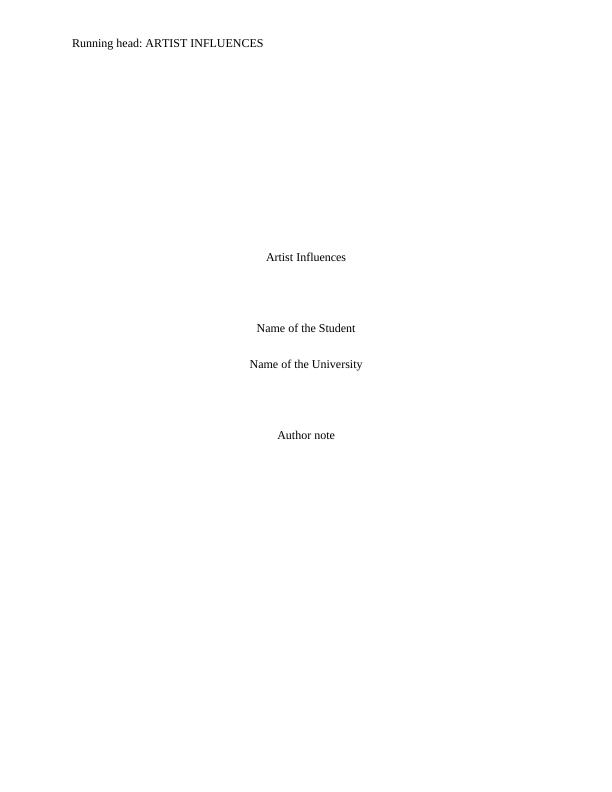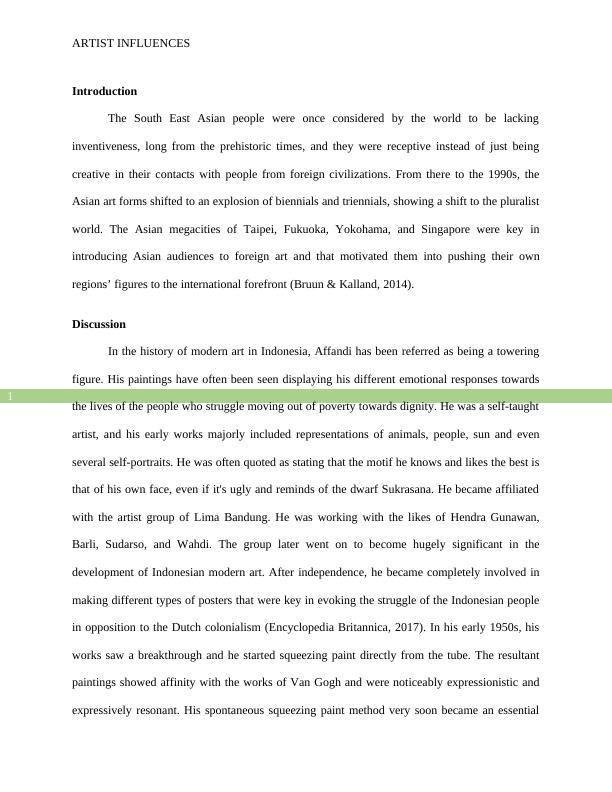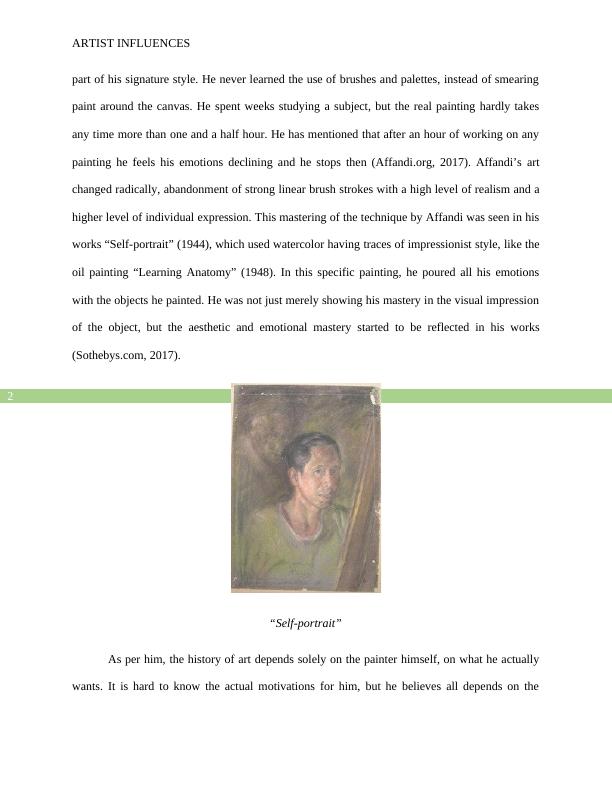Document on Artist Influences
8 Pages1672 Words154 Views
Added on 2020-04-21
Document on Artist Influences
Added on 2020-04-21
ShareRelated Documents
Running head: ARTIST INFLUENCESArtist InfluencesName of the StudentName of the UniversityAuthor note

1ARTIST INFLUENCESIntroduction The South East Asian people were once considered by the world to be lackinginventiveness, long from the prehistoric times, and they were receptive instead of just beingcreative in their contacts with people from foreign civilizations. From there to the 1990s, theAsian art forms shifted to an explosion of biennials and triennials, showing a shift to the pluralistworld. The Asian megacities of Taipei, Fukuoka, Yokohama, and Singapore were key inintroducing Asian audiences to foreign art and that motivated them into pushing their ownregions’ figures to the international forefront (Bruun & Kalland, 2014). Discussion In the history of modern art in Indonesia, Affandi has been referred as being a toweringfigure. His paintings have often been seen displaying his different emotional responses towardsthe lives of the people who struggle moving out of poverty towards dignity. He was a self-taughtartist, and his early works majorly included representations of animals, people, sun and evenseveral self-portraits. He was often quoted as stating that the motif he knows and likes the best isthat of his own face, even if it's ugly and reminds of the dwarf Sukrasana. He became affiliatedwith the artist group of Lima Bandung. He was working with the likes of Hendra Gunawan,Barli, Sudarso, and Wahdi. The group later went on to become hugely significant in thedevelopment of Indonesian modern art. After independence, he became completely involved inmaking different types of posters that were key in evoking the struggle of the Indonesian peoplein opposition to the Dutch colonialism (Encyclopedia Britannica, 2017). In his early 1950s, hisworks saw a breakthrough and he started squeezing paint directly from the tube. The resultantpaintings showed affinity with the works of Van Gogh and were noticeably expressionistic andexpressively resonant. His spontaneous squeezing paint method very soon became an essential

2ARTIST INFLUENCESpart of his signature style. He never learned the use of brushes and palettes, instead of smearingpaint around the canvas. He spent weeks studying a subject, but the real painting hardly takesany time more than one and a half hour. He has mentioned that after an hour of working on anypainting he feels his emotions declining and he stops then (Affandi.org, 2017). Affandi’s artchanged radically, abandonment of strong linear brush strokes with a high level of realism and ahigher level of individual expression. This mastering of the technique by Affandi was seen in hisworks “Self-portrait” (1944),which used watercolor having traces of impressionist style, like theoil painting “Learning Anatomy” (1948). In this specific painting, he poured all his emotionswith the objects he painted. He was not just merely showing his mastery in the visual impressionof the object, but the aesthetic and emotional mastery started to be reflected in his works(Sothebys.com, 2017). “Self-portrait”As per him, the history of art depends solely on the painter himself, on what he actuallywants. It is hard to know the actual motivations for him, but he believes all depends on the

End of preview
Want to access all the pages? Upload your documents or become a member.
Related Documents
Art Research Assignment (Doc)lg...
|13
|3128
|298
ARTD2038 Introduction to Visual Culturelg...
|12
|4161
|117
The French Revolution and Painting | Essaylg...
|3
|464
|10
Visual Analysis of Vincent Van Gogh’s – The Starry Nightlg...
|9
|2487
|433
Mughal Painting Miniaturelg...
|6
|1325
|61
The Gleaners by Jean-François Milletlg...
|7
|1528
|238
